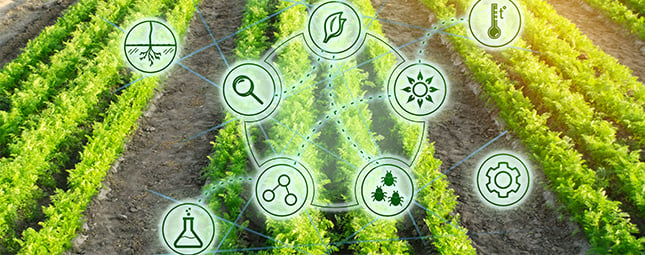
In 2019, Leanpath launched the Leanpath 12.3 Initiative, an effort to expand the reach of food waste prevention knowledge and tools to non-profits and educational organizations. As part of the Initiative, we’re excited to report on a research partnership we've joined entitled, “Food Waste and the Environment” sponsored by SESYNC – The National Socio-Environmental Synthesis Center.
SESYNC is funded through an award to the University of Maryland from the National Science Foundation, and it supports multidisciplinary research teams in bringing together “the science of the natural world with the science of human behavior and decision-making to find solutions to complex environmental problems.”
Our multidisciplinary team of experts from business, government, and numerous universities, led by Mary Muth of RTI International and SESYNC lead researcher Quentin Read, has been researching the impact of food waste in the United States and the most effective ways to intervene. Our goal, as Read stated, has been to gather information on food waste in the United States across the supply chain, quantify the environmental and economic impacts of that waste, and evaluate potential interventions to reduce the substantial negative environmental impacts of food waste.
Our team’s work has resulted in two published papers to date. In the first, “A systems approach to assessing environmental and economic effects of food loss and waste interventions in the U.S.,” published last June, we comprehensively reviewed available information on the causes and consequences of food loss and waste in the United States as a starting point to prioritizing solutions.
Building on our initial work, the team’s second paper, “Assessing the environmental impacts of halving food loss and waste along the food supply chain” (published in December 2019), explored the total environmental impact of the U.S. food system and investigated what stages of the U.S. food supply chain have the greatest potential to reduce resource use and negative environmental impact.
We found that a 50% reduction in food loss and waste across all major food supply chain stages would reduce the total environmental footprint of the food system by about 8-10%. The majority of the impact would emanate from the food processing, foodservice, and household consumption stages.
A key conclusion was that the most important goal of interventions to reduce food loss and waste should be source reduction – preventing the occurrence of food waste (the top level of EPA’s Food Waste Hierarchy). In addition, the team pointed to the importance of creating positive incentives to reduce waste at all levels of the food supply chain.
Going forward, Read notes that the team will use the results to compare individual food waste reduction technologies and policies, making recommendations on which ones warrant prioritized investments by business organizations and governments in order to maximize benefit for the environment, the economy, and society. As Muth notes, “As a society, we should focus on promoting food loss and waste interventions that have the potential for the greatest environmental improvements relative to the costs.”
To learn more about the Leanpath 12.3 Initiative, visit https://www.leanpath.com/leanpath-initiative.